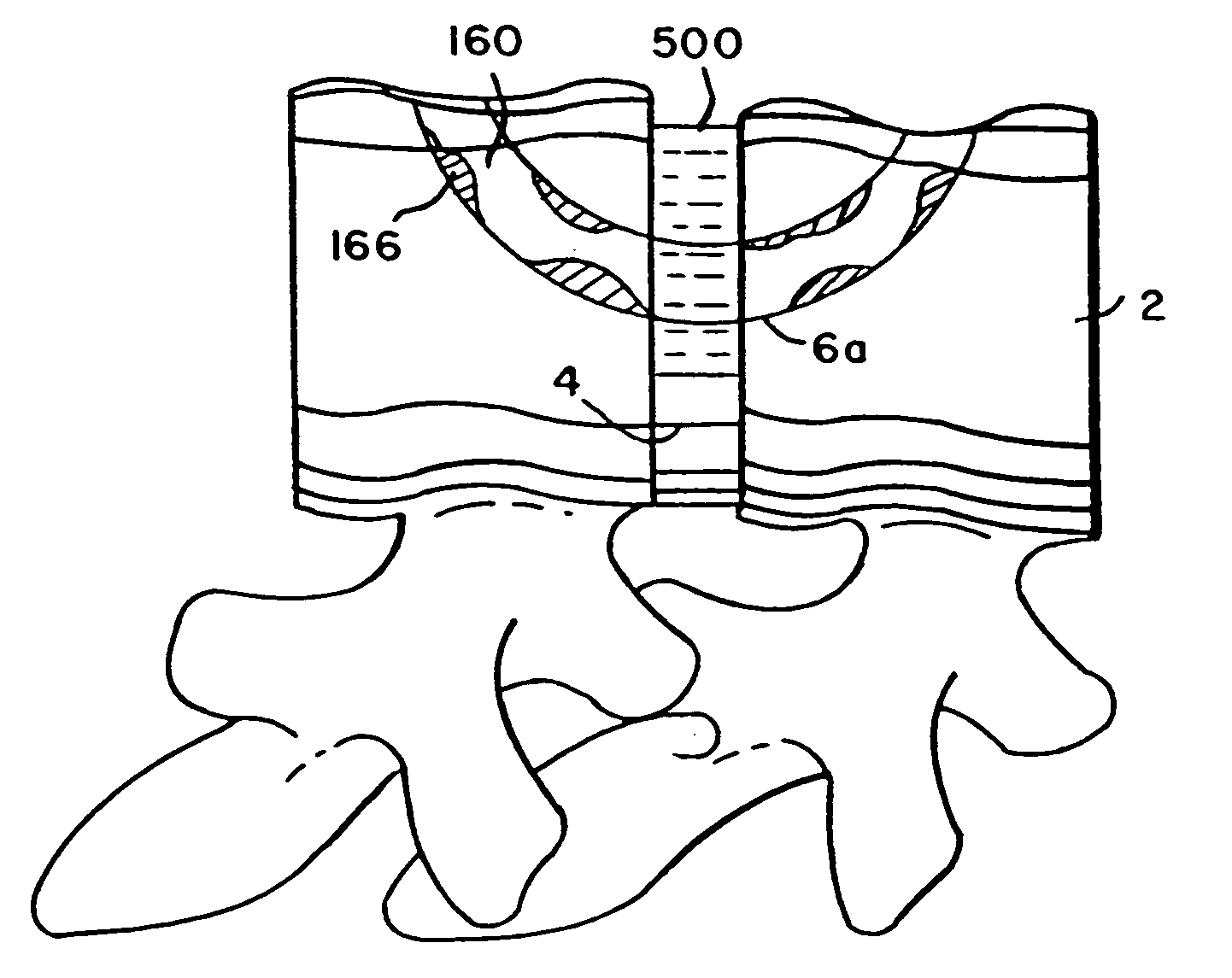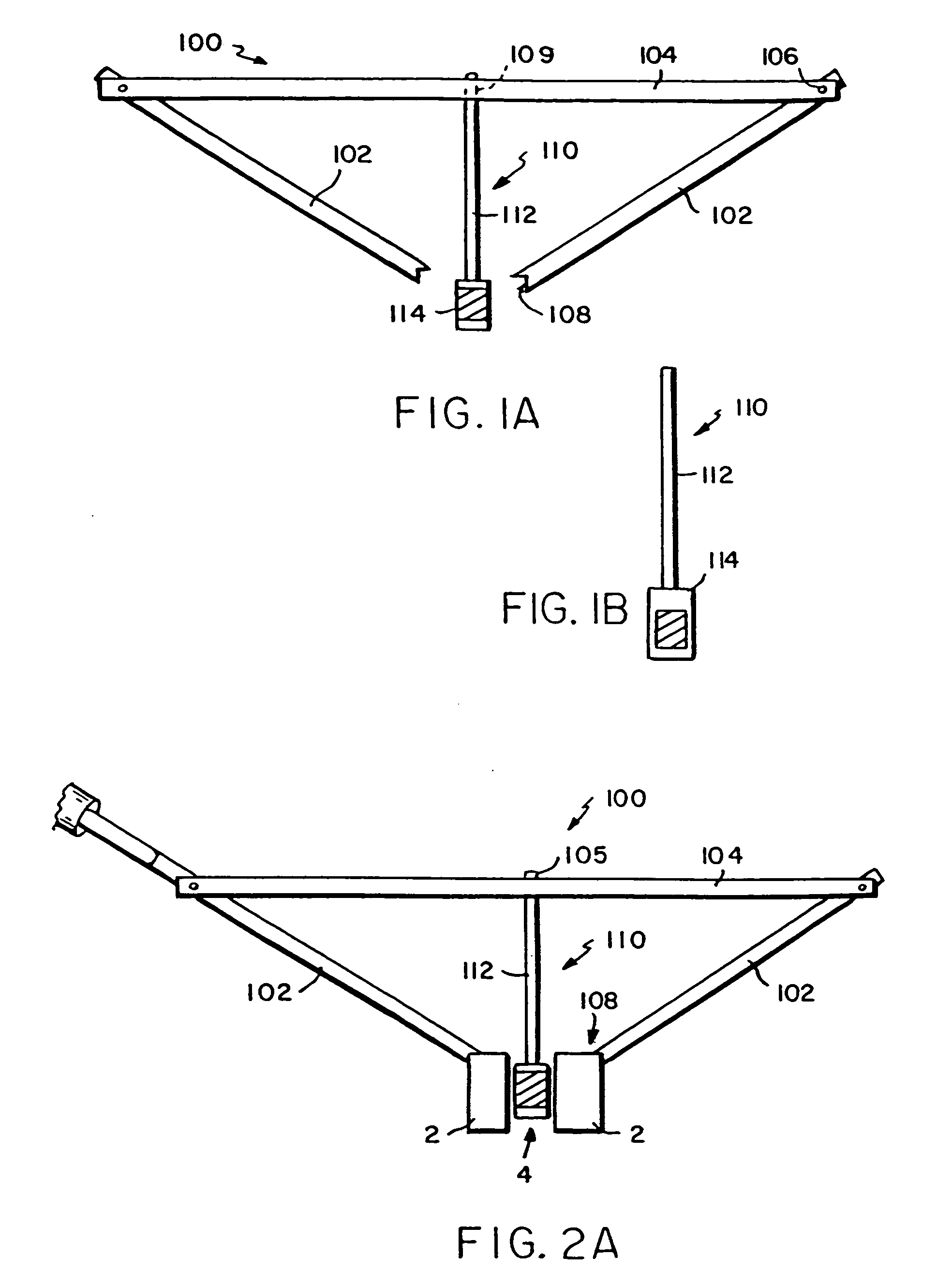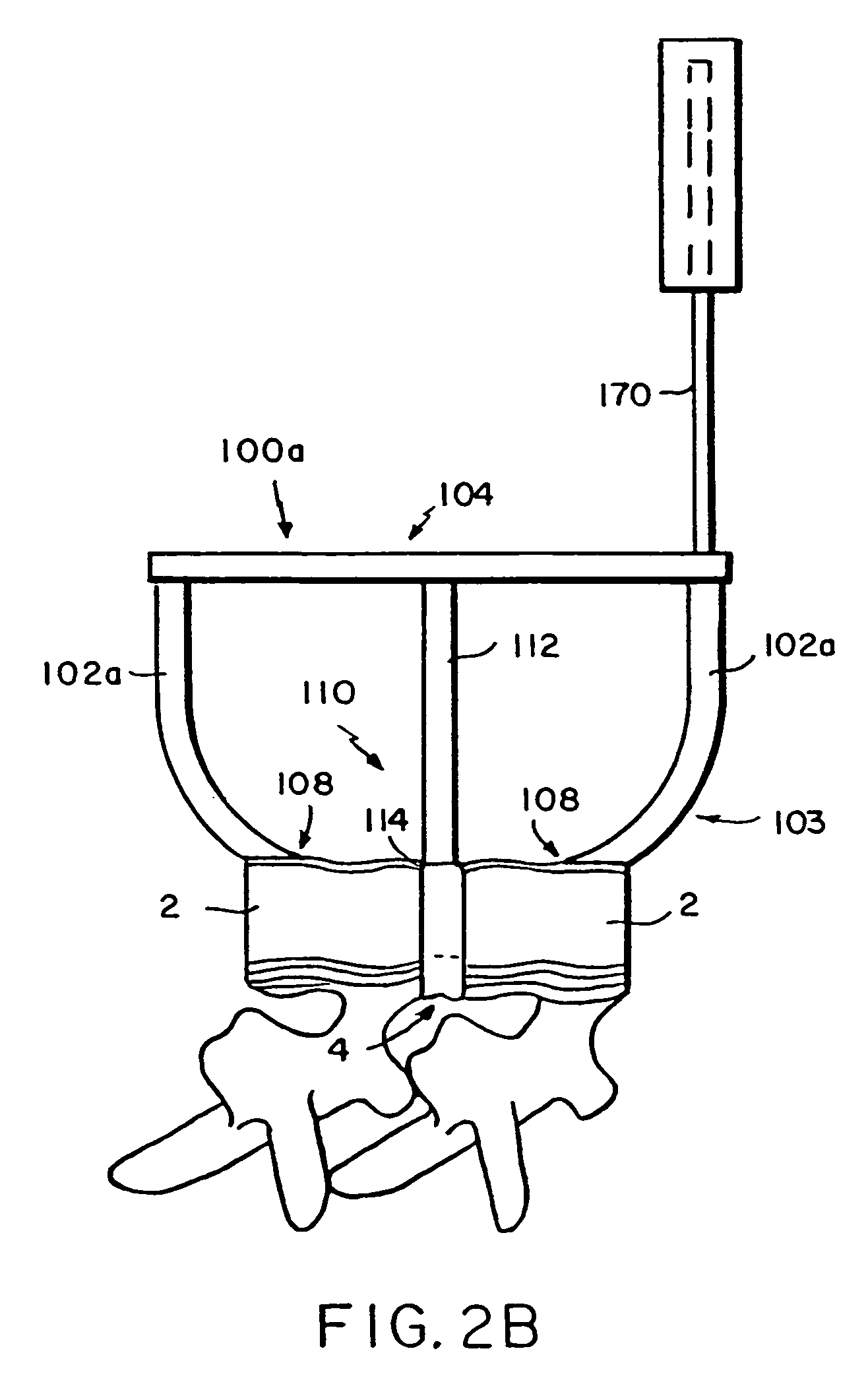Systems and methods for spinal fixation
- Summary
- Abstract
- Description
- Claims
- Application Information
AI Technical Summary
Benefits of technology
Problems solved by technology
Method used
Image
Examples
Embodiment Construction
[0060]Referring now to the various figures of the drawing wherein like reference characters refer to like parts, there is shown in FIGS. 1–2 various schematic views of a drill guide or positioning jig 100 that positions or aligns the drill bits before making the holes in each of the vertebral bodies 2. The positioning jig 100 includes two guide sleeves 102, a cross member 104 and an intervertebral spacing member 110. Each guide sleeve 102 preferably is a hollow tubular member having a lumen or passage therein for receiving and guiding the means for forming at least the initial aperture in the adjacent vertebrae such as a drill bit 150 (FIG. 3B). As indicated elsewhere herein, the aperture may be formed using other techniques such as the ablation of bone by an energy source, e.g., high-pressure water, high-pressure air, ultrasound, or a laser. As such, it shall be understood that the internal sizing and configuration of the guide sleeves is established to accommodate the particular m...
PUM
| Property | Measurement | Unit |
|---|---|---|
| Force | aaaaa | aaaaa |
| Diameter | aaaaa | aaaaa |
| Size | aaaaa | aaaaa |
Abstract
Description
Claims
Application Information
 Login to View More
Login to View More - R&D
- Intellectual Property
- Life Sciences
- Materials
- Tech Scout
- Unparalleled Data Quality
- Higher Quality Content
- 60% Fewer Hallucinations
Browse by: Latest US Patents, China's latest patents, Technical Efficacy Thesaurus, Application Domain, Technology Topic, Popular Technical Reports.
© 2025 PatSnap. All rights reserved.Legal|Privacy policy|Modern Slavery Act Transparency Statement|Sitemap|About US| Contact US: help@patsnap.com



